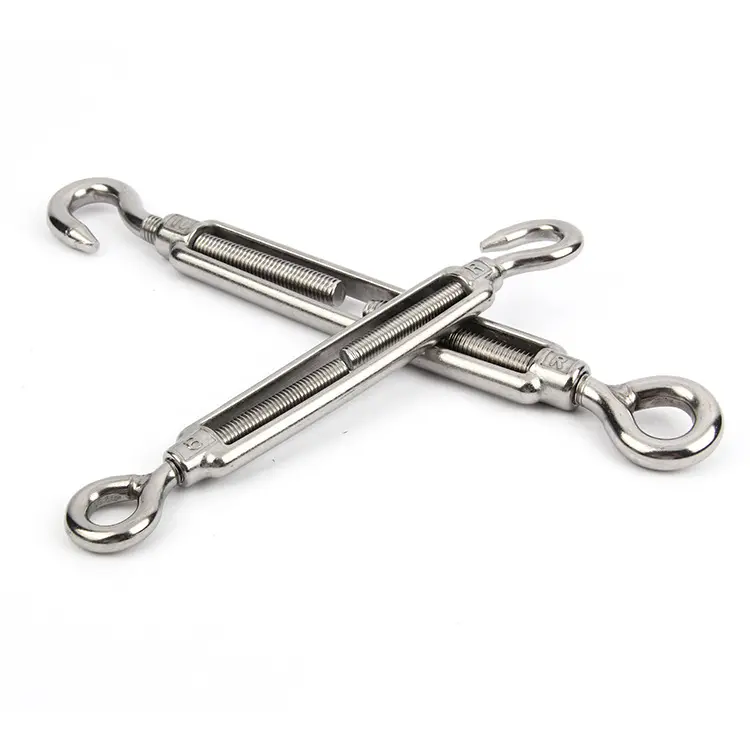News
ડીસેમ્બર . 19, 2024 06:21 Back to list
Adjustable Wire Turnbuckle for Securing and Tensioning Cables and Rods
Understanding Wire Turnbuckles A Comprehensive Overview
Wire turnbuckles are essential components in the world of rigging and construction, designed to adjust the tension in cable and wire arrangements. They serve as pivotal devices used in various applications, from marine and architectural uses to sports facilities and industrial installations. This article will explore the functionality, benefits, types, and applications of wire turnbuckles, providing a well-rounded understanding of this crucial hardware.
What is a Wire Turnbuckle?
A wire turnbuckle is a mechanical device that consists of a metal frame with two threaded terminals on either end. These terminals can be eye hooks, hooks, or pad eyes, which accommodate connecting cables or wires. The central body of the turnbuckle allows for rotation, enabling the user to either tension or slacken the wire, achieving the desired level of tightness. This adjustment capability makes wire turnbuckles indispensable where precise tension control is required.
Benefits of Using Wire Turnbuckles
1. Adjustability One of the principal advantages of wire turnbuckles is their ability to easily adjust tension. Whether you're securing a load or stabilizing structural elements, the ease of manipulation makes them an efficient choice.
2. Strength and Durability Typically constructed from high-grade materials such as stainless steel or galvanized steel, wire turnbuckles provide exceptional strength and resistance to environmental factors. This durability ensures that they can withstand significant loads without failing.
3. Versatility Wire turnbuckles can be employed in various settings, including construction, marine applications, and even in residential projects. This adaptability reduces the need for multiple types of tensioning equipment.
4. Cost-Effectiveness With their durability and versatility, wire turnbuckles are a cost-effective solution for many tensioning needs. Investing in high-quality turnbuckles can minimize maintenance and replacement costs over time.
Types of Wire Turnbuckles
wire turnbuckle product

Wire turnbuckles come in several types, each serving different applications
1. Open Body Turnbuckles These have a simple design with open ends, allowing for easy access while adjusting tension. They are commonly used in temporary rigging setups.
2. Closed Body Turnbuckles Characterized by a closed construction, these turnbuckles are ideal for permanent installations where additional strength and stability are critical.
3. Clamp Type Turnbuckles These utilize a clamping mechanism, providing adjustable tension without the risk of the turnbuckle slipping. They are often found in applications requiring frequent adjustments.
4. Adjustable Eye Turnbuckles Equipped with eyes to facilitate easy connection and disconnection, these are perfect for situations where flexibility is necessary.
Applications of Wire Turnbuckles
Wire turnbuckles are used in a plethora of applications, including
- Construction Used to stabilize structures such as scaffolding, bridges, and other frameworks. - Marine Essential for rigging sails and securing components on boats and yachts. - Sports Facilities Employed to tension nets and cables in stadiums and sports complexes. - Telecommunications Useful in securing and adjusting guy wires for radio towers and other installations.
Conclusion
In summary, wire turnbuckles are vital components in various fields, offering a unique blend of adjustability, strength, and versatility. Whether you are involved in construction, marine operations, or any other industry requiring wire tensioning, understanding the functionality and types of wire turnbuckles will enable you to make informed decisions. Their ability to enhance safety and reliability in structures underscores their importance in modern applications. Investing in high-quality wire turnbuckles can greatly improve operational efficiency and longevity in any project.
